When choosing a diamond shape for your engagement ring, there are plenty to consider. Sure, there's the round, the cushion, the oval. But if you're after more angular appeal and straight lines, there are no two diamonds higher on the list than the radiant cut diamond and the emerald cut diamond. But which to choose? Well, welcome to the ultimate showdown of sparkle vs sophistication: Radiant Cut vs Emerald Cut diamond engagement rings!
It's kind of like the red carpet of the diamond world, where radiant cut diamonds strut their stuff with the confidence and trendiness of a Hollywood starlet, while emerald cut diamonds exude the timeless elegance of old-school beauty and sophistication. So grab a seat, and your popcorn, because I'm about to spill the tea on the quirks and characteristics of each of these glittering contenders.
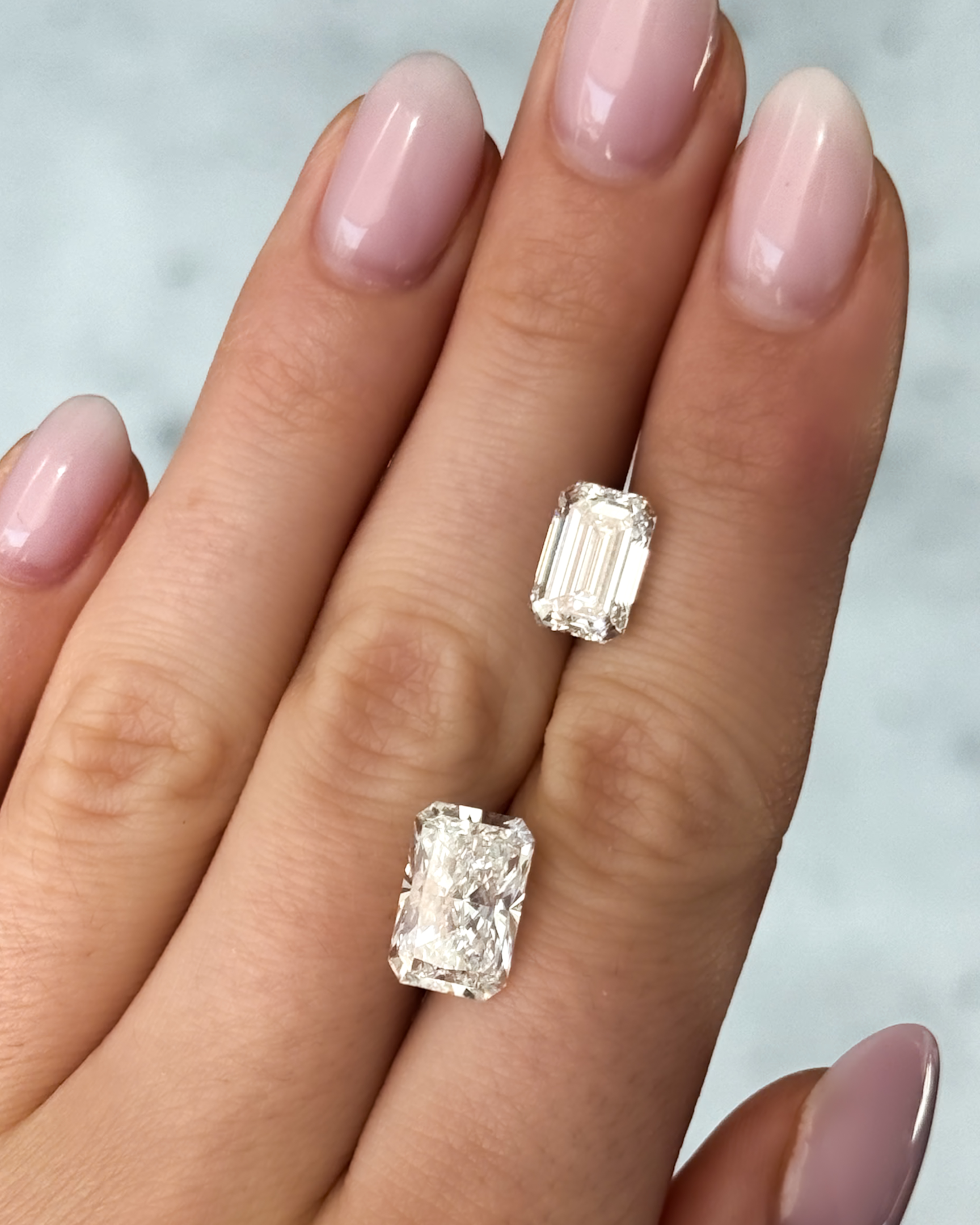
No matter which you choose, an Emerald or Radiant Cut diamond is sure to dazzle till the end of time.
Radiant vs Emerald Cut Shape
Choosing a center stone for your perfect engagement ring is no laughing matter. You want a diamond cut to ideal proportions, with intense sparkle, and natural beauty. And during your hunt, you've narrowed it down to the clean lines, straight edges, and elongated shape of either the radiant or emerald. And you're right - they do have one thing in common. Both of these shapes can have a rectangular outline with cut corners. But that's where their commonalities end.
Radiant cut diamonds are a hybrid cut diamond shape, and have step-cut facets on their crown (the top) and brilliant facets on their pavilion (the bottom). They typically have 70 facets or more, which is higher than the 57-58 facets of most other diamond shapes. This faceting style maximizes brilliance and fire, creating a dazzling sparkle.
Emerald cut diamonds, on the other hand, showcase parallel step-cut facets on both the crown and pavilion, characterized by long, narrow windows concentric to the diamond's edges. This results in a hall-of-mirrors effect with flashes of light rather than intense brilliance.
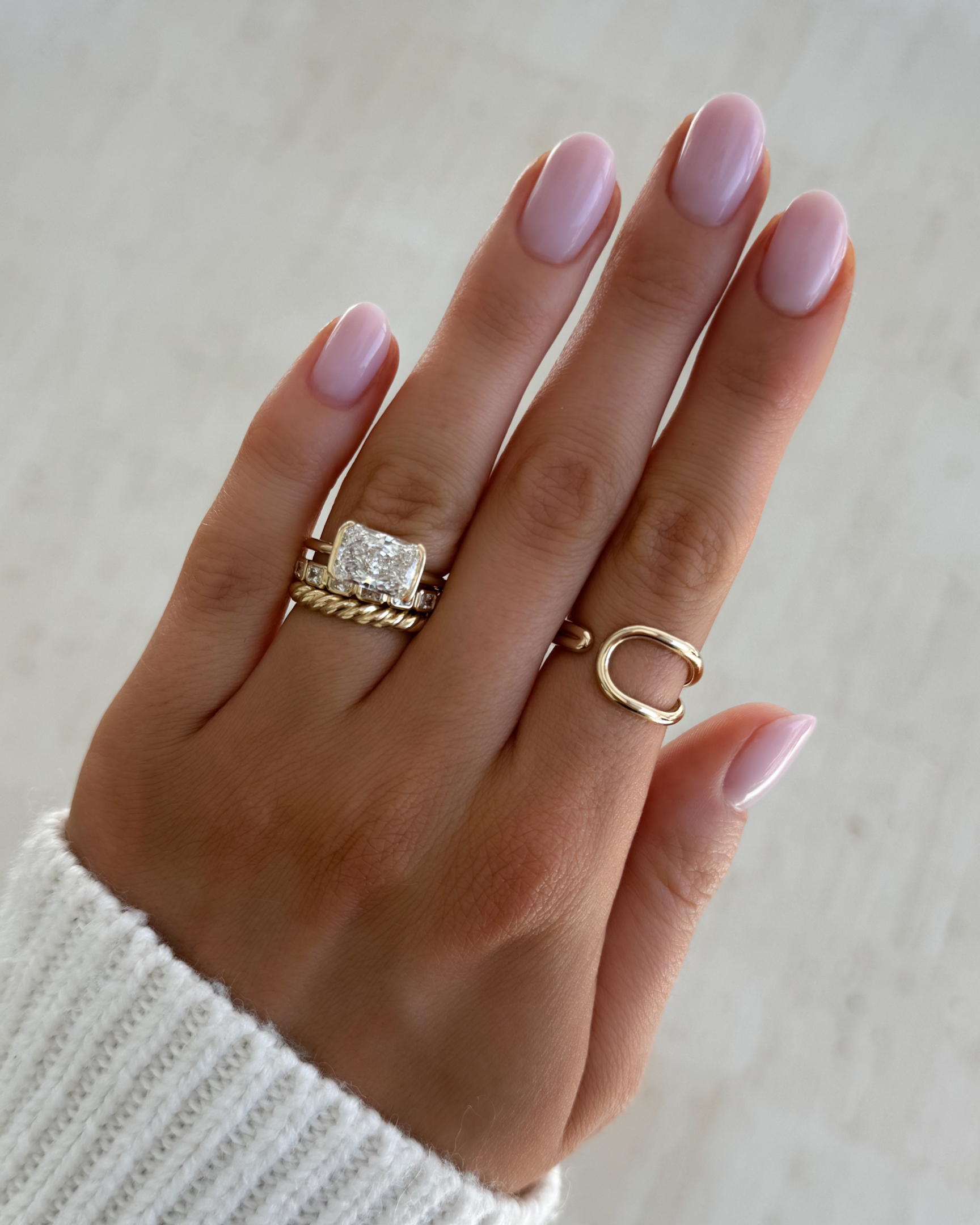
Maximizing brilliance and fire for a dazzling sparkle with the, East West Half Bezel Solitaire Engagement Ring With Elongated Radiant Cut Diamond.
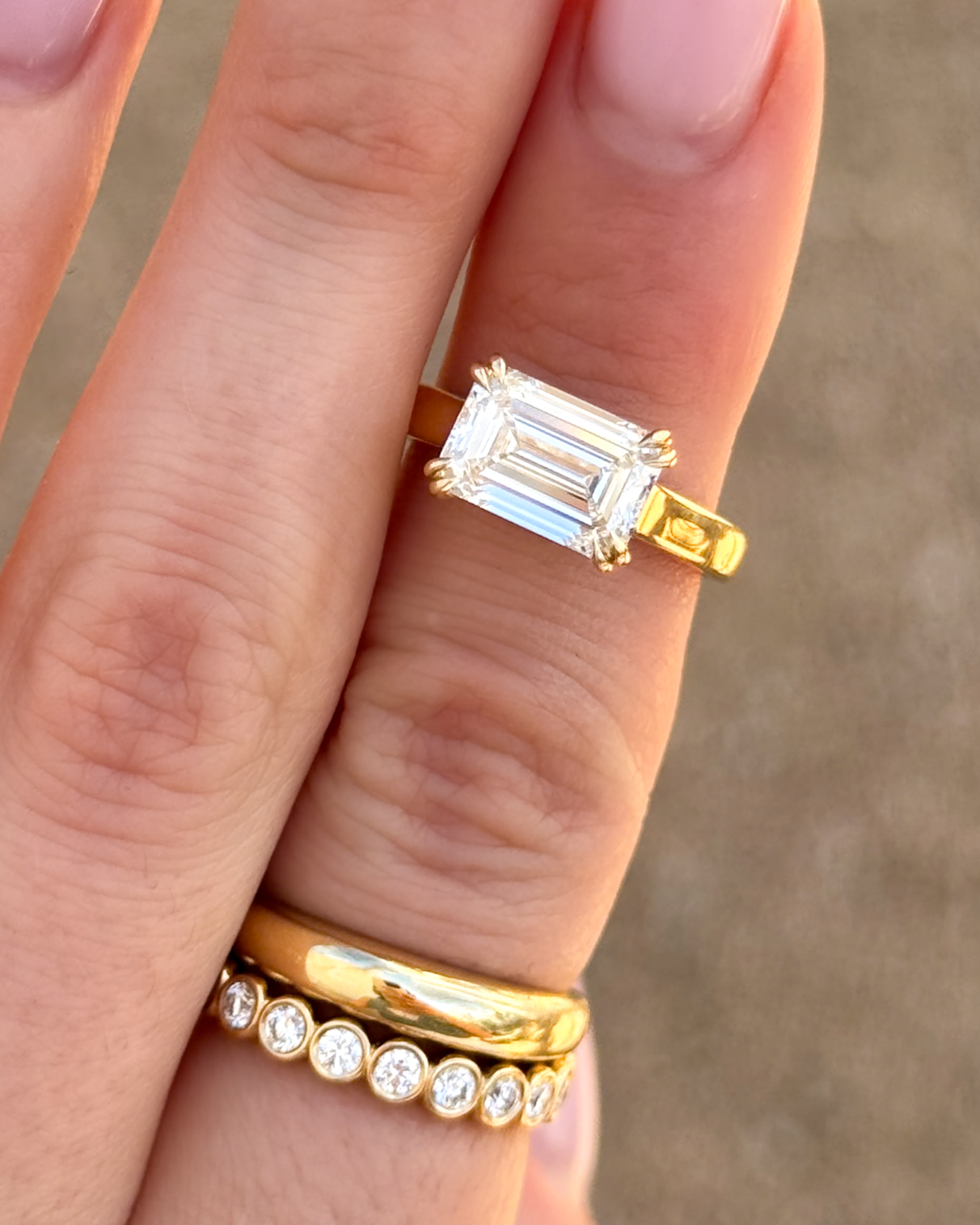
Captivating flashes of light instead of intense brilliance, creating a mesmerizing hall-of-mirrors effect with the, Signature Cathedral Solitaire Engagement Ring With Emerald Cut Diamond (East West).
The History of Emerald Cut and Radiant Cut Diamonds
The histories of the radiant cut and emerald cut diamonds trace back to different eras and motivations in the evolution of diamond cutting. Here's a glimpse into the fascinating past of each:
Emerald Cut Diamonds
The emerald cut diamond dates back to the 16th century when diamond cutting was still in its infancy. Originally developed for cutting emeralds (hence the name), this cut gradually gained popularity for diamonds due to its elegant appearance and ability to showcase the gem's natural beauty.
During the Art Deco period of the 1920s and 1930s, the emerald cut experienced a resurgence in popularity, becoming synonymous with the sleek lines and geometric designs of the era. It became a favored choice for luxury jewelry and engagement rings, admired for its timeless elegance and sophistication.
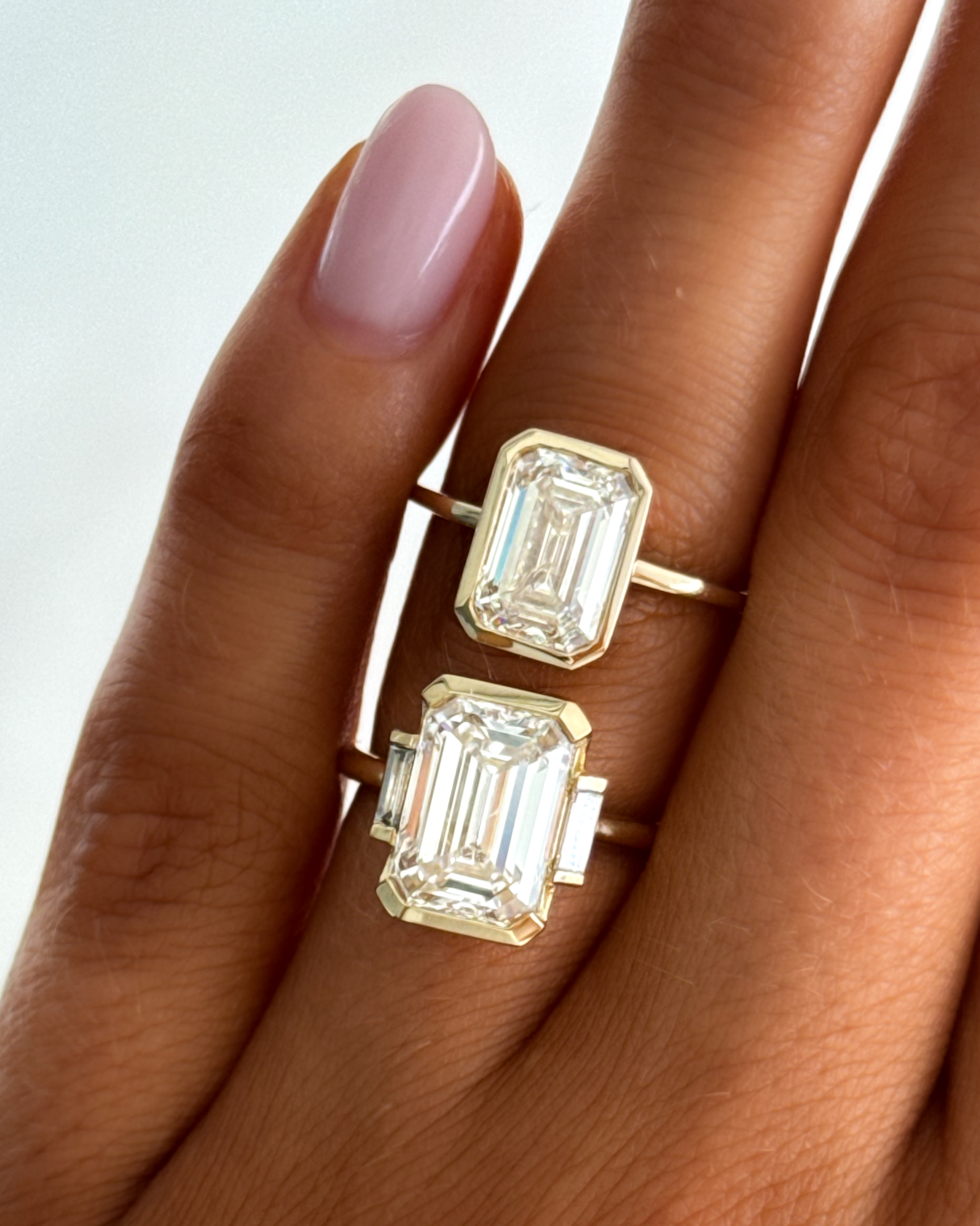
Choose a Bezel Set Emerald Cut Diamond for a modern twist on tradition.
Radiant Cut Diamonds
The radiant cut is a more recent addition to the world of diamond cutting, with its origins dating to the 1970s. Developed by master cutter Henry Grossbard, the radiant cut diamond was designed to combine the brilliance of round brilliant cuts with the sleek lines of emerald cuts.
Grossbard sought to create a square or rectangular diamond with trimmed corners that would exhibit exceptional sparkle and fire, similar to round brilliants. The result was the radiant cut, featuring a brilliant faceting pattern with numerous facets that maximize light performance and scintillation.
You will not see it referred to as a radiant cut on a diamond grading certificate, however, as the industry uses the term "cut-cornered rectangular modified brilliant" to describe the shape. Today, the radiant cut stands as a symbol of contemporary elegance and innovation in diamond cutting, beloved for its dazzling sparkle and distinctive look.
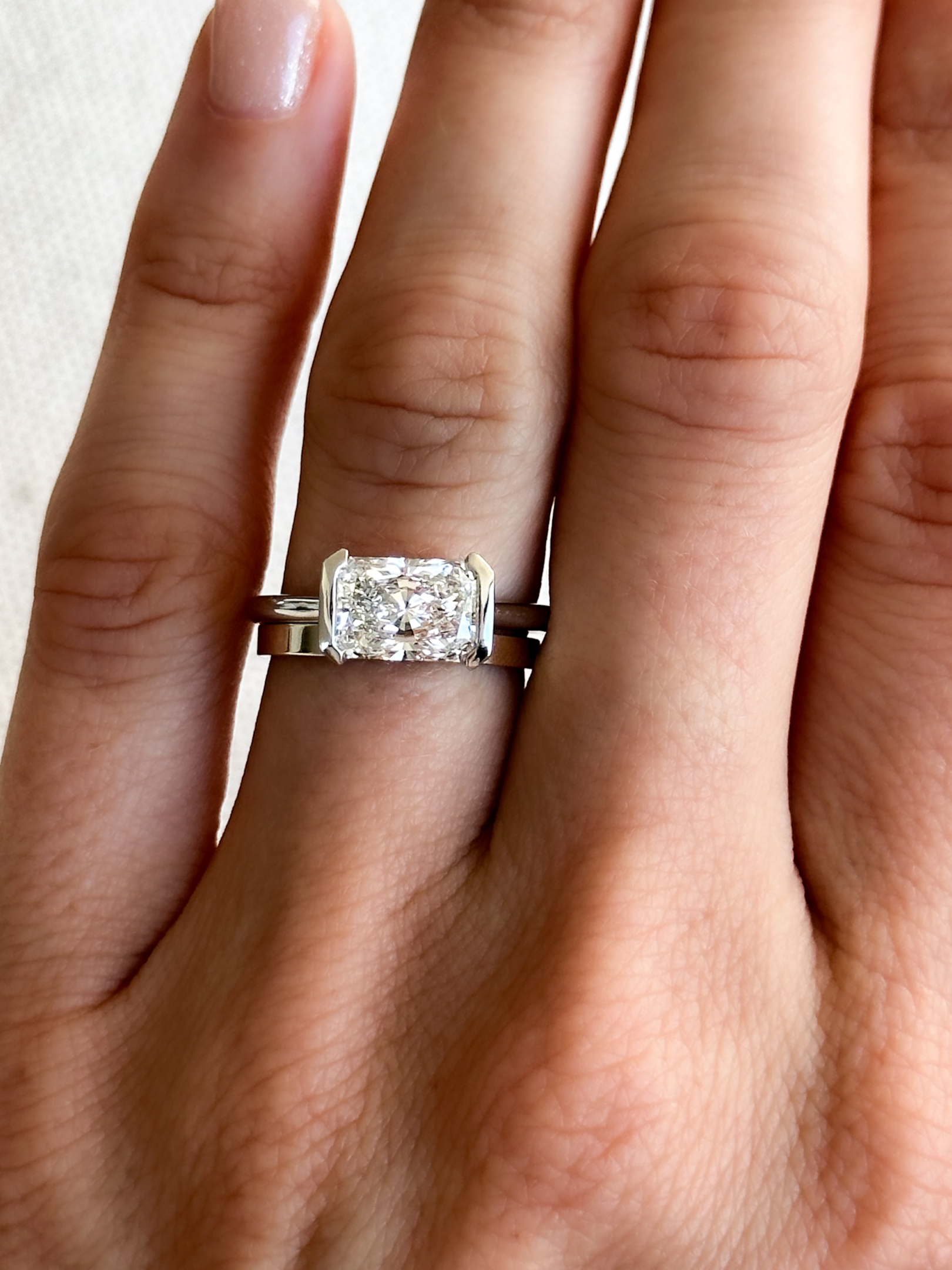
The East West Half Bezel Solitaire Engagement Ring With Elongated Radiant Cut Diamond is a modern twist on the radiant cut diamond.
Radiant vs Emerald Cut Clarity
Besides a difference in sparkle, these two cuts also have a very different appeal when it comes to diamond clarity. The brilliant faceting pattern of radiant cut diamonds can help mask inclusions to some extent, especially when viewed face-up, while the step-cut faceting style of emerald cut diamonds tends to reveal inclusions more readily, as it creates a window-like effect that allows you to see deep into the diamond. This means that you'll likely want to choose a higher clarity grade for an emerald cut diamond, in order to minimize the appearance of inclusions.
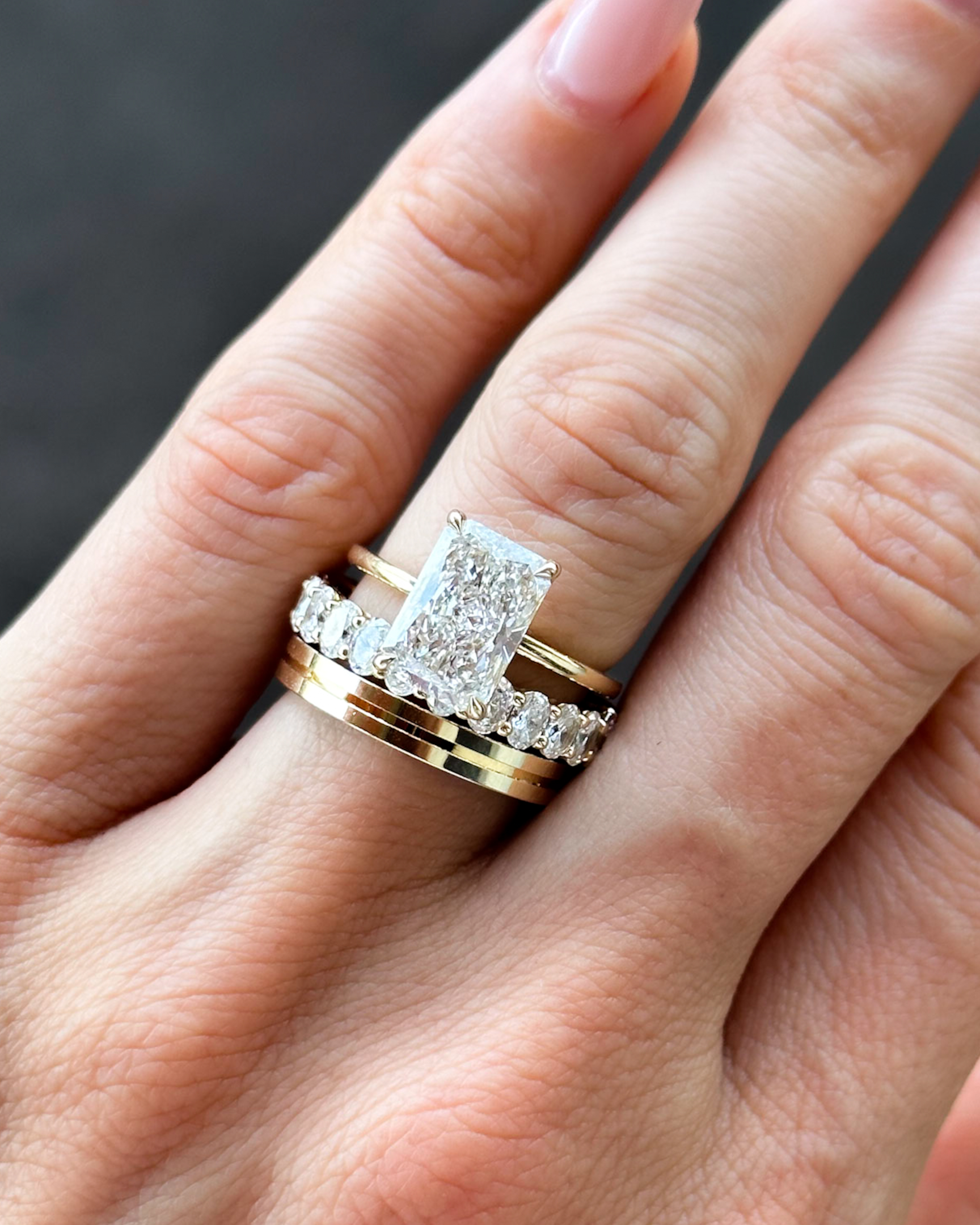
Shine bright with the Thin + Simple Solitaire Engagement Ring With Elongated Radiant Cut Diamond.
Choosing a Size and Shape
While radiant cut diamonds can be either square or elongated rectangles, emerald cut diamonds are always some degree of rectangle. Their square version is actually just an Asscher cut diamond. So what we're really comparing here are the elongated versions of these two diamond cuts. And one of the biggest questions of preference is your diamond's length to width ratio. This is the degree of elongation of your center stone. Do you prefer a shorter, wider stone, or a very elongated, more slender stone? If you prefer a more elongated diamond cut, you will want to look for a higher length to width ratio, for instance 1:3 or even 1:7! Granted, finding a radiant or emerald cut diamond with that high of a ratio will be more difficult due to availability, it's not unheard of.

Any ratio you choose, the Penumbra Bezel Set Engagement Ring With Emerald Cut, one of our most popular rings is sure to look stunning no matter what.
The Price of Radiant vs Emerald Cut Diamonds
Another consideration for choosing your center diamond is always price and budget. Generally, radiant cut diamonds may be priced slightly higher than emerald cuts due to their intricate faceting and higher demand. Emerald cut diamonds are often priced slightly lower than radiant cuts of similar quality, making them an attractive option for those seeking elegance without breaking the bank. However, prices can vary for each depending on factors such as carat weight, color, clarity, and overall quality.
If you are looking for a larger diamond but working within a budget, one option is to look for a lab created diamond. These are real diamonds, with the same chemical, physical, and optical properties of natural diamonds mined from the earth, however, they are about half the price. And they are also more sustainable, so provide a beautiful option that sparkles exactly the same, while saving money and resources.
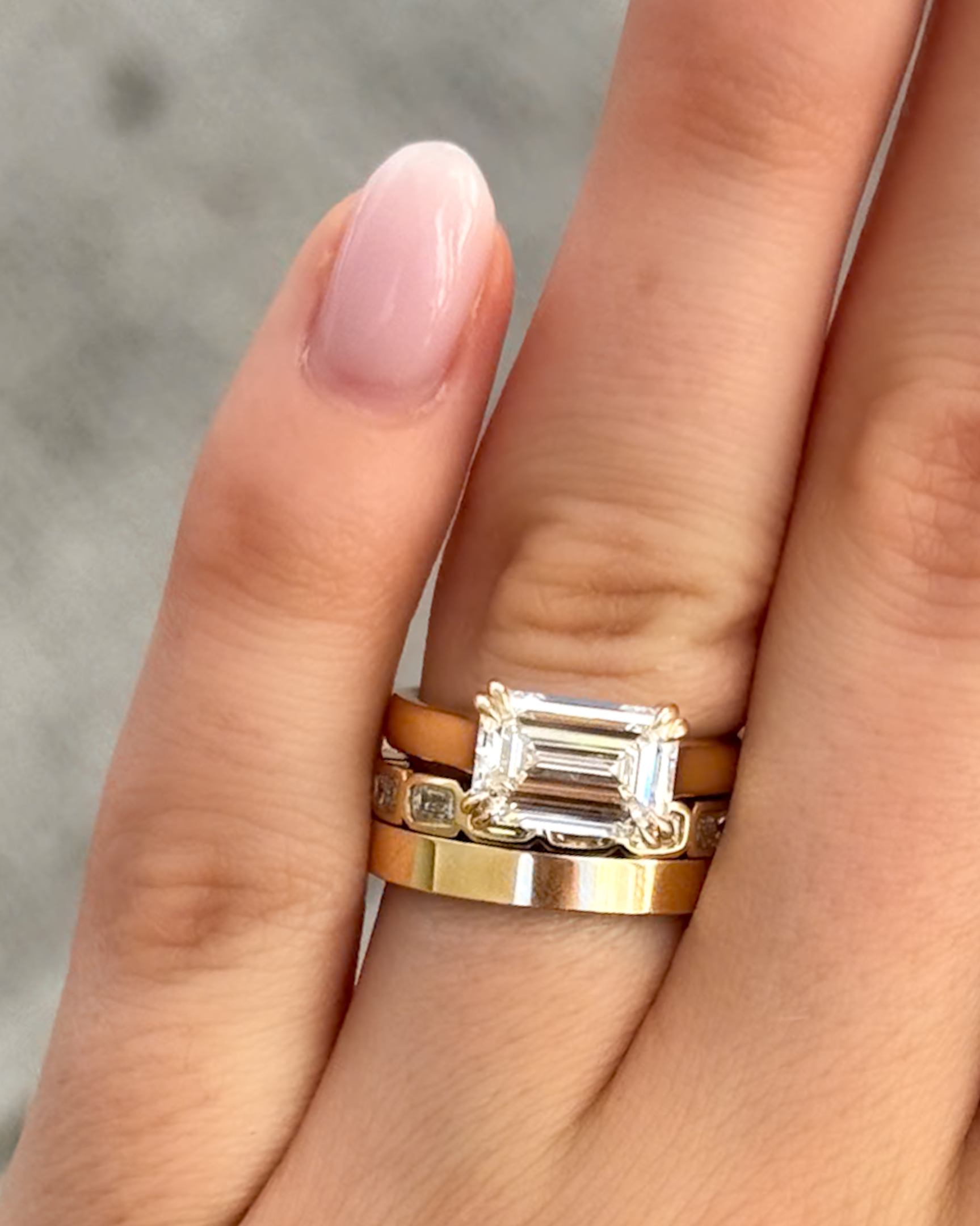
Featured here the Signature Cathedral Solitaire Engagement Ring With Emerald Cut Diamond (East West), with 3 Carat Lab Grown Emerald Cut Diamond.
Engagement Ring Styles
While there are countless engagement ring settings for both emerald diamonds and radiant diamonds these days, each of these diamond cuts is particularly flattering in certain designs. Because emerald cut diamonds reflect the Art Deco era, they make a wonderful pairing with vintage-inspired settings or very geometric looks. They also look wonderful with baguette cut side stones in three-stone settings, which is a truly timeless look.
The radiant cut diamond, on the other hand, is very versatile and well suited to modern looks and engagement rings with plenty of pave side diamonds. They look stunning with accent stones, in a halo setting, or anything with more sparkle to really amp up their brilliance. With each of these shapes you can also consider whether you want your diamond to sit north-south (parallel to your finger), which is the classic look that is said to elongate a wearer's fingers; or east-west (sitting horizontal across your finger), which is a modern, on-trend look that can make your diamond appear larger compared to the classic way, as it takes up more space across your finger.

The Radiant cut truly shines in any setting, particularly when nestled within a Split Shank Solitaire Engagement Ring with Radiant Cut Diamond.
The Winner is You
No matter which cut you choose for your diamond engagement ring, you really can't go wrong if you go with your heart. Your style, preferences, and budget should always guide your decision in diamond shape. So when it comes to emerald cut vs radiant, the choice is ultimately yours.
You can explore each of these shapes within our signature engagement ring collection, or reach out to begin the custom ring design process, where we will help you design the ring of your dreams and source the perfect diamond for your love story.








Leave a comment (all fields required)